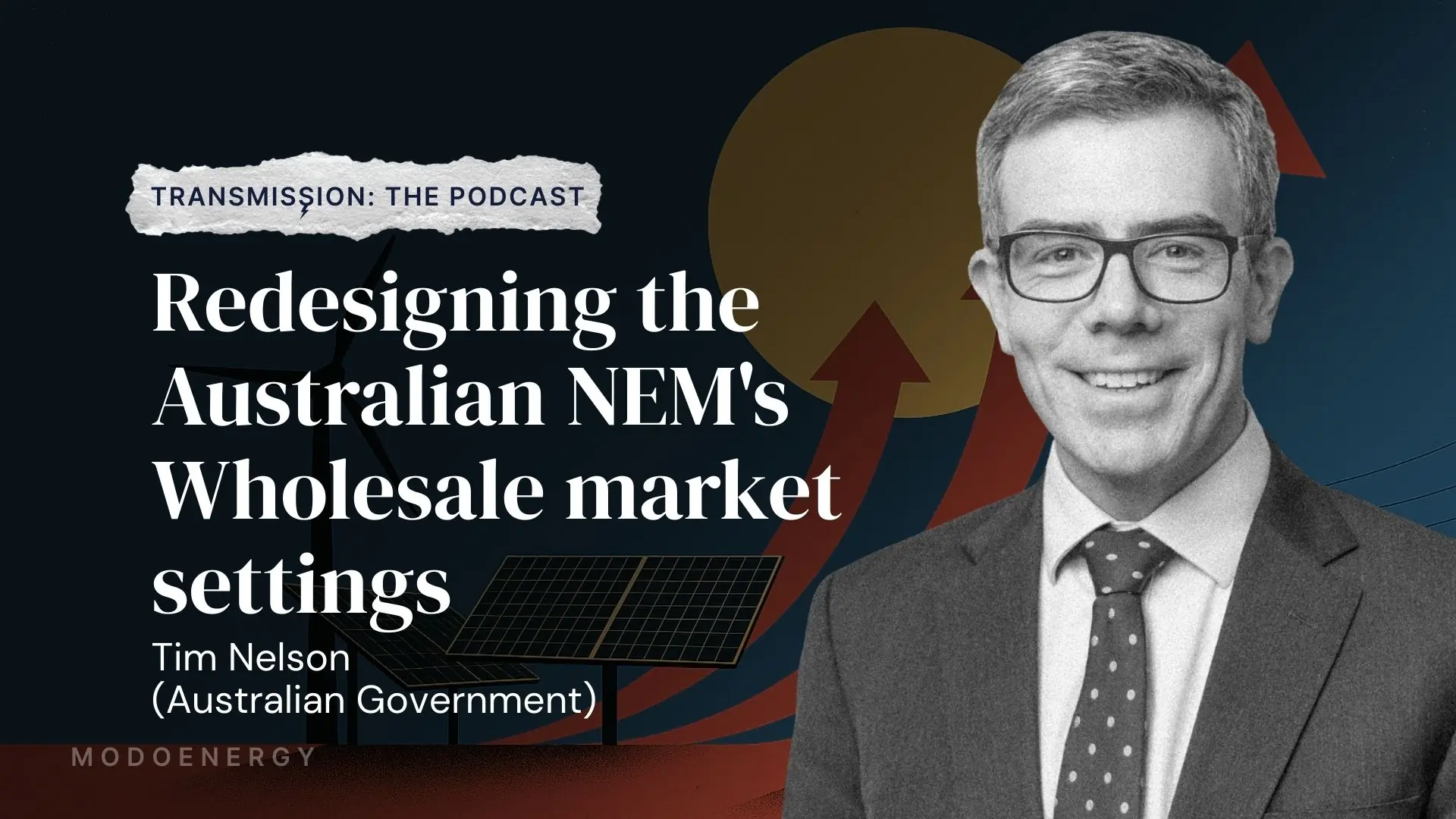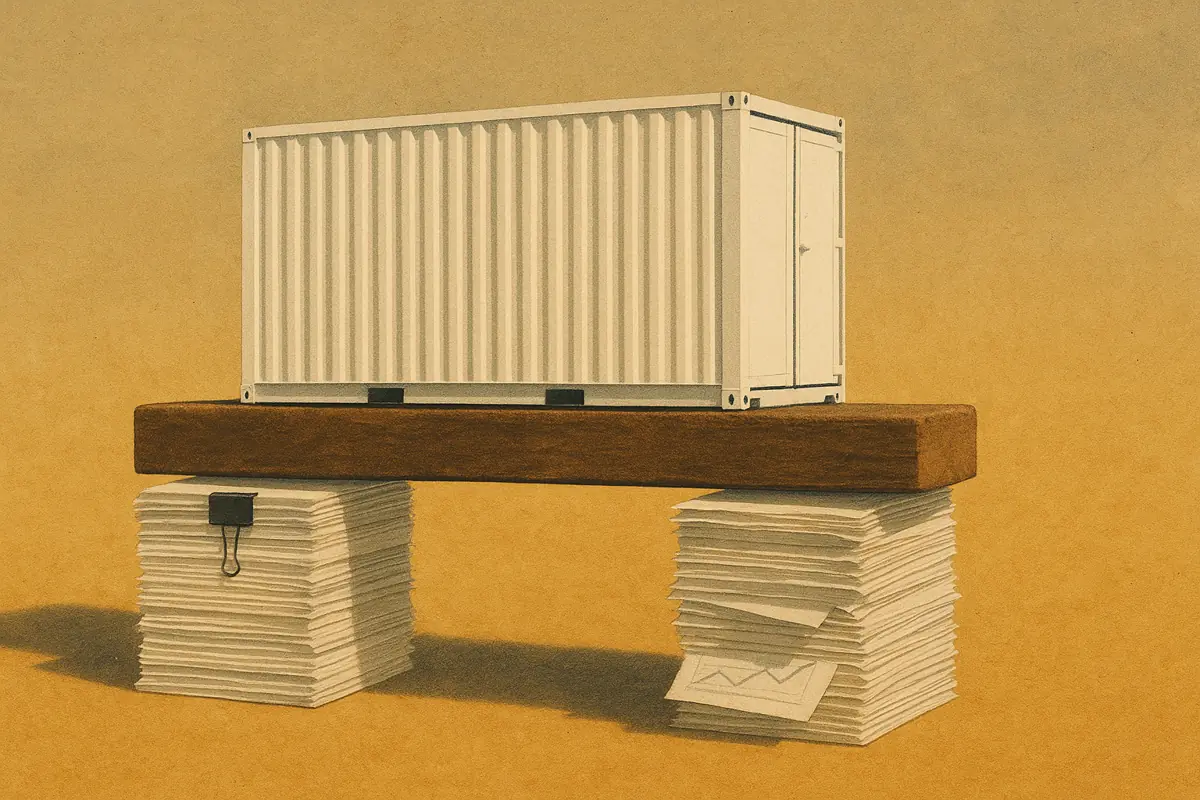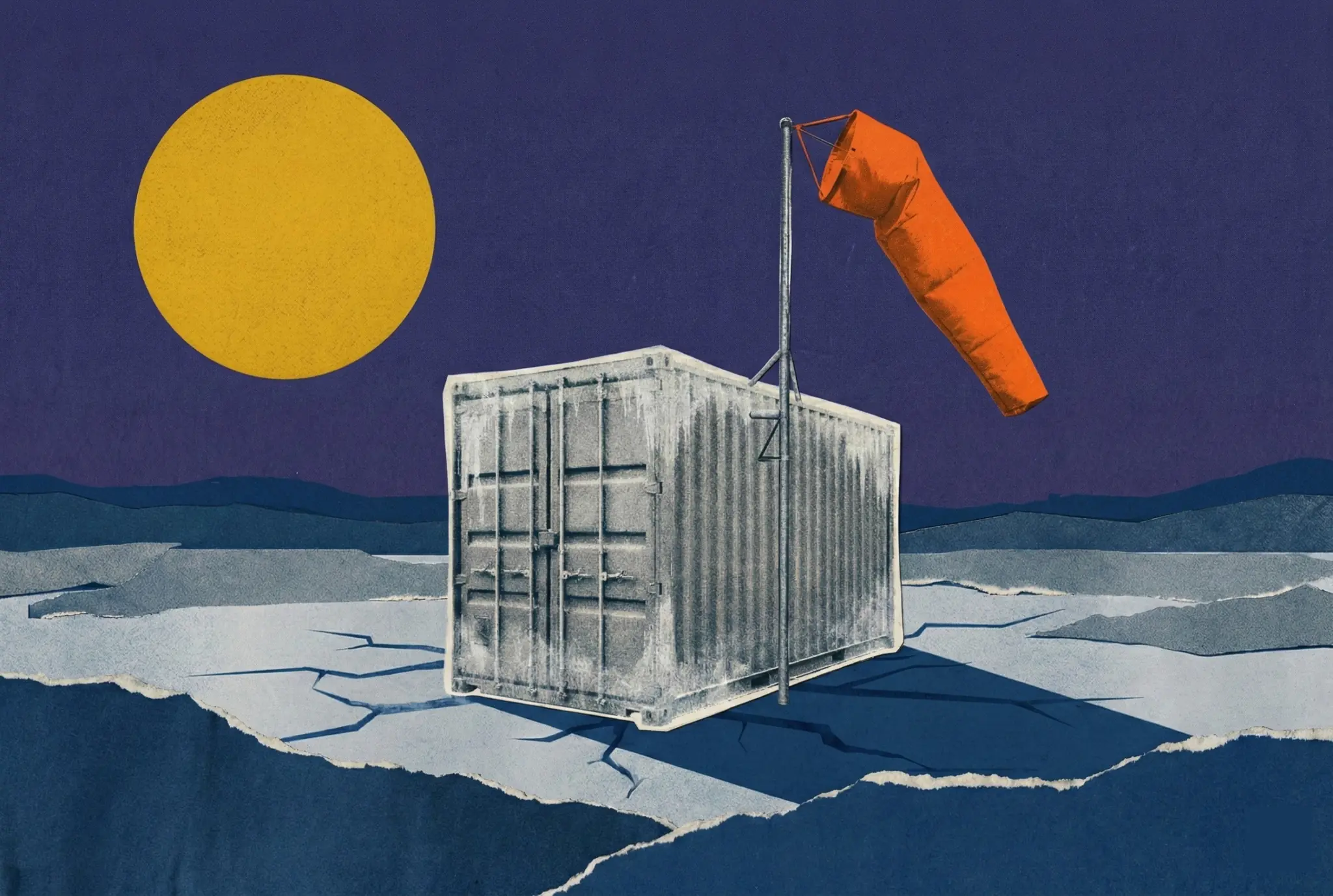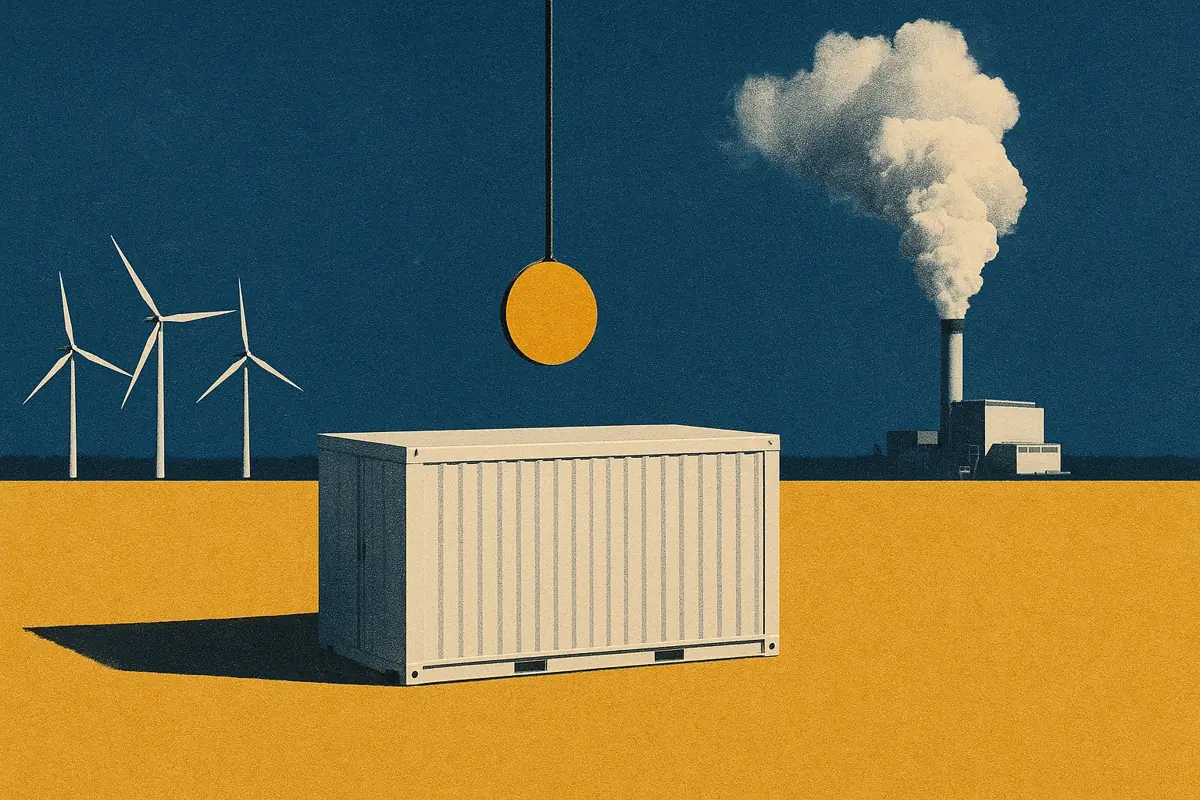Congestion revenue rights (CRRs) and financial transmission rights (FTRs) are financial contracts that can help battery owners and operators hedge risks, and potentially amplify returns.
Once a resource connects to the grid, the price dynamics at its network position determine its revenue opportunities. As new generators and transmission lines alter the grid’s power flows and topology, supply-demand patterns - and thus price patterns - shift.
These shifts can shrink price spreads and reduce arbitrage revenues for batteries. For example, price spreads in the Houston load zone have declined in recent years relative to spreads across the rest of the network.
With a battery’s position on the grid significantly determining its merchant revenues, how can its operator manage locational price risk - and possibly benefit from price differences across the grid?
The answer? Congestion Revenue Rights.
If you have any questions about Modo Energy’s research, please reach out to logan@modoenergy.com or brandt@modoenergy.com.
Congestion revenue rights allow generators to access higher prices despite their location
In a nodal grid, the locational marginal price (LMP) differs between nodes. Typically, it’s higher at nodes with excess demand and lower at nodes with excess supply.
The core principle of a CRR is to allow market participants to hedge locational price risk. These participants include generation, demand, and storage units. Generation units can get exposure to higher prices near demand centers. At the same time, load entities can access lower prices in less congested grid areas.
There are six features that define a CRR:
- Term: The length of the contract - typically a single month or season.
- Time-of-use: The time of day the contract is active for - typically on-peak and off-peak, whose definitions vary by region.
- Volume: The amount of power contracted, in MW.
- Source: The point on the grid where Energy is added, e.g. the generator’s node.
- Sink: The point on the grid where Energy is removed, often a load zone's trading hub.
- Type: A CRR can be an “obligation” or “option”. In this article we will focus on the obligation subtype.
CRR payments are funded by congestion rents collected by the grid operator. (Congestion rents are the revenues that grid operators collect from the price differences between locations when transmission constraints prevent cheaper power from flowing to higher-priced areas.) This makes them different from hedging instruments in financial markets. Futures and options require a counterparty taking the opposite position. With CRRs, no counterparty takes the other side of the bet. The price of the contracts are set in auctions that take place each month or season.
CRR contracts offer both flexibility and purely financial settlement, and do not require any physical connection between the source and sink. Similarly, a market participant does not need to own or operate physical infrastructure at a node involved in the transaction. This is key to making CRRs a viable risk management tool for batteries.
How do CRRs work, and how do they boost revenues?
A CRR pays the holder the price difference between two nodes, multiplied by volume of capacity contracted, in MW.
Traders call the difference between the two prices the “basis” and calculate it by subtracting the source node price from the sink node price. These contracts use the node’s day-ahead prices, and are purely financial products. In addition, physical operations do not play a part in the settlement.
We can use Angleton BESS's price node in ERCOT to illustrate how CRRs might be used in practice.
Since its commissioning in March 2025 through August 2025, Angleton has earned $16/kW in Ancillary Services and Energy arbitrage, or $160k in total. The site has been the top-performing battery in terms of its Top-Bottom price capture rate, as featured in Modo Energy’s ERCOT benchmark reports for August and September 2025.
A 10MW on-peak CRR contract in Q2 2025 between Angleton BESS’s node and the Houston Load Zone Hub would have delivered a CRR payment of $50.7k to the contract holder.
The price at Angleton BESS’s node is regularly lower than the Houston Load Zone’s in the peak hours. This is due to the neighboring 380MW solar farm that suppresses midday prices in the region, and the fact Angleton, with a rated power of 9.9MW, is too small to solve the congestion constraint.
Incorporating a CRR contract would have raised Angleton’s revenues. The illustrative CRR described above would have brought all-in revenues to $210k - a 31% increase.
Can CRRs hedge a battery’s locational basis risk?
In short: yes, but batteries face unique challenges.
A battery needs to charge and discharge, but a standard CRR can only hedge one of these directions. This forces operators to choose which risk matters more.
(Note: CRR options behave differently than CRR obligations, but are beyond the scope of this article.)
Using the battery’s node as a source hedges evening peak risks, but increases exposure in the morning
Consider first when the battery discharges with low nodal prices. If the hub price is higher than the battery’s nodal price, the CRR pays out, partially offsetting poor wholesale revenues. But if the hub price is even lower, the battery makes CRR payments that cut into its bottom line.
Now consider high nodal prices. Here the CRR can be a catalyst: if hub prices are even higher, the contract lifts revenues further - and brings the battery’s performance in line with others in its zone. If hub prices are lower, the CRR payments dampen revenue inflows and lower the benefit of local congestion.
But that’s the nature of a hedge: they sacrifice some upside to protect against downside.
Unlike traditional generators, CRRs create a unique dynamic for batteries when it comes to charging.
A CRR with the source sited at the battery’s node increases the risks associated with charging at midday.
If the battery’s nodal price is low at noon, it can inexpensively charge in preparation for the evening peak. A higher hub price would generate CRR payments to offset the charging costs - impacting the battery positively.
But the reverse situation is the worst of both worlds.
A high nodal price and low hub price in this situation would mean expensive charging and substantial CRR obligations.
Siting the sink at the battery’s node can hedge morning risk
Although the terms “source” and “sink” evoke actual energy flows, CRRs are purely financial contracts. This means a CRR can run ‘backwards’ - from hub to generator node.
This type of CRR - with a load hub as the source and the battery’s node as a sink - can hedge risks associated with unfavorable prices in charging periods. The logic in the previous section applies here too.
During the middle of the day, low nodal prices means charging is inexpensive. The CRR with a sink at the asset’s node can make these periods of the day more expensive - it’s as if the battery were buying power from the higher-priced source node instead. In the case where the source & sink nodes were closer in price, the CRR increases cash outflows, but less so.
The real value of holding a CRR with a sink at an asset’s node comes when nodal prices are high just when the asset needs to charge. If the sink price is on par with the nodal price, or higher, then holding the CRR can only increase net revenues. But CRR payments can significantly offset charging costs if the sink prices are lower.
When should you use a CRR to hedge basis risk?
The decision hinges on which operational risk threatens profitability most - charging or discharging.
After studying the price dynamics of the asset’s node and making that decision, three criteria determine when CRRs provide effective hedges.
- Predictable congestion: Persistent congestion patterns are a good candidate for CRRs.
- Asymmetric risk: CRRs only work in one direction, but batteries work in two - use a CRR to transform that risk into reward.
- Material impact on project economics: The congestion risk should be significant enough to justify the CRR premium. Even if congestion patterns shift, the hedge protects against the downside scenarios.
What could that decision process look like in practice?
Leverage similar, but not identical, dynamics in other parts of the grid
The Henrietta BESS unit resides in California’s NP15 congestion zone, despite being located in the southern half of the state - halfway between Fresno and Bakersfield.
It also shares a site with the 100MW Henrietta solar array, meaning the 10MW BESS unit is exposed to large spreads. But this dynamic comes with risks, so the battery could insure its income by acquiring a CRR with a sink at its node.
Holding such an on-peak CRR, with its source at the Southern California Edison (SCE) load price hub, can significantly reduce revenue risks in the winter.
Solar irradiance decreases in the winter, but the magnitude of that change depends on a number of factors, one of which is the latitude of measurement. Because the Henrietta site is located farther north than most of the other solar farms - and all of the arrays in SCE’s region - its irradiance decreases more.
That meant there was a smaller volume of inexpensive solar energy available for Henrietta BESS to charge with. Rain accompanying atmospheric river events that reached the Central Valley but not the Californian deserts drove the wedge even further.
In the latter half of December, Henrietta BESS’s nodal price dipped below $20/MWh just once, whereas the SCE LAP did so six times, even going negative at one point.
A CRR from SCE’s load hub to Henrietta BESS’s node could have tapped into those lower charging prices.
The contract mitigates the risks of being in a region that is not as solar-friendly as the desert.
Of course, the situation was reversed earlier in the month: Henrietta’s nodal prices were lower, resulting in CRR obligations. In this case though, Henrietta BESS would have come out ahead: the total on-peak basis across the month was $517/MW.
Regional insight maximizes CRR values
For both Angleton and Henrietta, familiarity with nodal price patterns enabled effective CRR usage. In Angleton’s case, it comes from recognizing that the unit is on the “wrong” side of a much larger solar farm in a predictable way, and circumventing the array with a CRR. As for Henrietta, its illustrative CRR decouples its returns from local weather dynamics to lock in revenue.
CRRs are tools to manage congestion risk, and congestion is a local phenomenon. To make the most of these contracts, knowledge of local congestion is key.
CRRs are flexible instruments
In each of the examples above, the CRR involved the node of a given battery. That doesn’t have to be the case, though — CRRs are versatile instruments, and can involve any two nodes on the network.
These situations are more accurately called “speculation,” or at least “statistical hedging,” because such a CRR does not respond to changes in the asset’s LMP. However, they can still deliver the same results as the direct hedges discussed above.
This idea can be especially valuable for owners with a portfolio of BESS. Similar regions or related transmission paths create correlated risks for individual sites located within them. A portfolio of CRRs can reshape aggregate risk exposure, reducing correlation to weather events or transmission outages. The right set of CRRs can mold the risk profile into a more suitable shape for the investor’s preferences.
However, some of those hedging instruments might be highly valued by a large number of market participants - an on-peak CRR from SP15 to NP15, for instance. And that high demand might translate to a premium for those contracts.
If you’d like to learn more about how battery operators can leverage Congestion Revenue Right contracts to hedge against nodal basis risk, email the author at logan@modoenergy.com.







